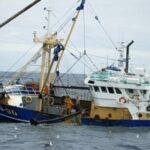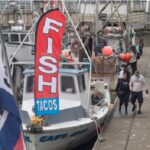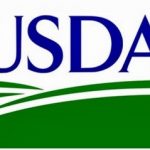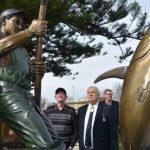Daily Archives: July 22, 2019
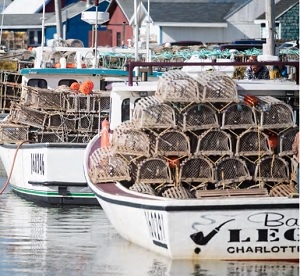
P.E.I. fishermen feel unjustified blame in right whale deaths, says PEIFA
Island fishermen feel they’re being blamed in some cases of right whales becoming entangled in fishing gear and dying this year, according to the P.E.I. Fishermen’s Association. Several of the eight dead right whales found this year have been entangled in fishing gear. “This year a number of the deaths that were necropsied already show to be due to vessel strikes rather than the entanglement,” >click to read< 19:45
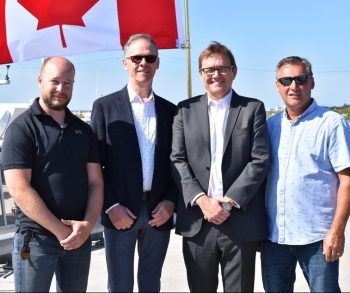
Wilkinson Celebrates new Fisheries Act Measures for Preserving the Independence of the Inshore Fleet
Ensuring that the benefits of the fishery remain in local communities,,, the Honourable Jonathan Wilkinson, announced that measures that will ensure that key policies relating to owner-operator and fleet-separation policies are being enshrined in regulation under the new Fisheries Act. The owner-operator policy requires fish harvesters to fish their licences personally so that those who actively fish, receive the benefits from their licences. The fleet-separation policy maintains a separation between the fishing and fish processing sectors. Maintaining the independence of small-boat owner-operators and implementing a fair licensing regime will help protect middle-class jobs and ensure the long-term sustainability of the fishery. >click to read< 16:46
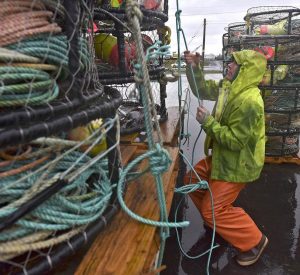
Oregon wants to untangle whales from crab fishery
The number of whales entangled so far this year off Oregon, Washington state and California appears to be down compared to prior years, according to preliminary reports. But Oregon wants to avoid a lawsuit like the one brought against California by the Center for Biological Diversity. That lawsuit, over impacts to whales from commercial fishing activities, settled in March. For now, fishery managers will eliminate a two-week postseason cleanup period in the commercial Dungeness fishery,,, >click to read< 15:57
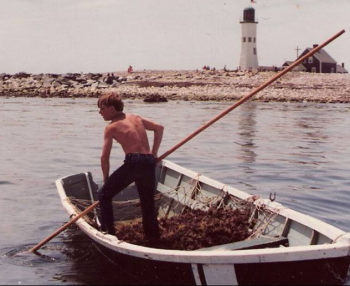
Irish immigrants launched a booming mossing industry in Scituate, Massachusetts
After discovering ‘Irish moss’ in coastal waters, Irish immigrants launched a booming mossing industry in Scituate, Massachusetts.,,, Irish moss, formally known as Chondrus crispus, grows on the surface of undersea rock formations. Harvesting is traditionally done by hand, using a 12-foot rake to pry off the broccoli-like tops of the moss, being sure not to rip out the stems or “holdfasts,” which would prevent the plant from growing back. >click to read< 15:14
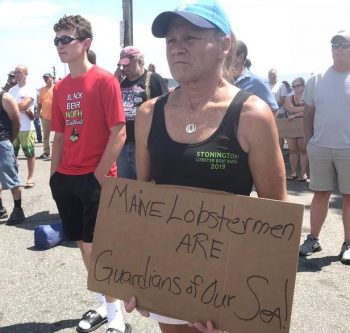
Hundreds Of Maine Lobstermen Protest Federal Regulations At Stonington Unity Rally
Hundreds of lobstermen and their allies turned out for a unity rally in Stonington Sunday. They were protesting a federal proposal to cut by half the rope they use to haul their traps – a measure to protect the endangered North Atlantic right whale from potentially deadly entanglements. Winter Harbor lobsterman Philip Torrey says the industry has adapted to numerous federally mandated gear changes over the years, and he says the latest proposal could force him to connect more traps to each of his lines, adding cost and danger to his work. >click to read< 11:49
Lobstermen and women rally against industry regulations, right whale deaths – Photo’s and a report, >click to read< 12:20
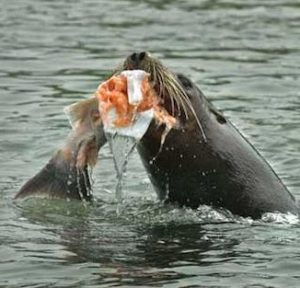
As It Was in 1928: Coastal Newspaper Editor Opposes Killing Sea Lions
On July 24, 1928, the editor of Port Orford News, George Sorenson, called for the end to wanton hunting of sea lions. The misguided carnage had been ongoing for a quarter century, and in 1928 hunters received a $10 bounty for each sea lion scalp. Sorenson urged determination of whether the sea lions should be killed to protect salmon fishing or protected as natural tourist attractions on the Oregon Coast. The media crusade to end the carnage persisted, support grew, and the state responded by reducing the bounty to 50 cents. By 1930, the U. S. Bureau of Fisheries had determined that the sea lions did not hurt commercial salmon populations. Audio, >click to read<10:00

The Legacy of the Blob
In 2013, a mass of unusually warm water appeared in the Gulf of Alaska. Over the next three years, the Blob, as it became known, spread more than 3,200 kilometers, reaching down to Mexico. This freak marine heatwave, combined with a strong El Niño, drastically affected the Pacific Ocean ecosystem killing thousands of animals and changing the distribution of species along the coast. It’s been three years since the Blob dissipated, and researchers are taking stock of its long-term impacts on fish and other wildlife. >click to read< 08:41






































